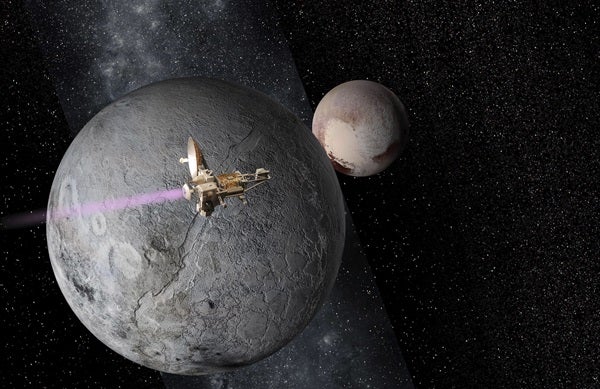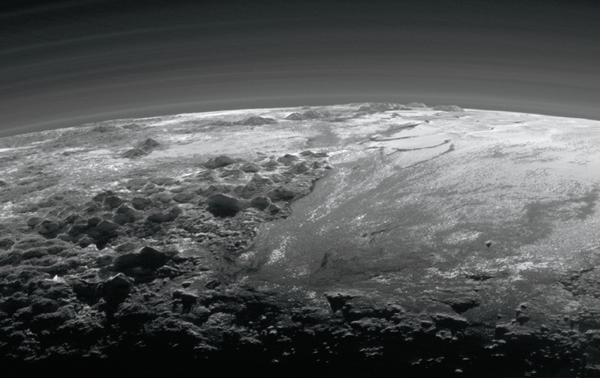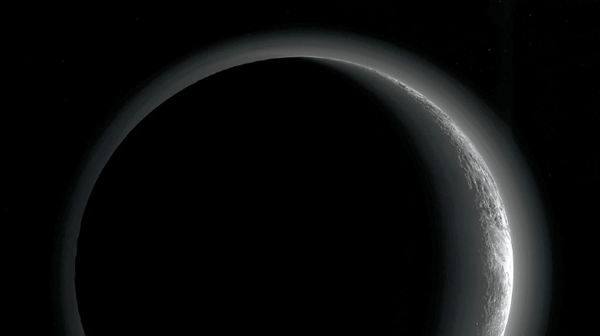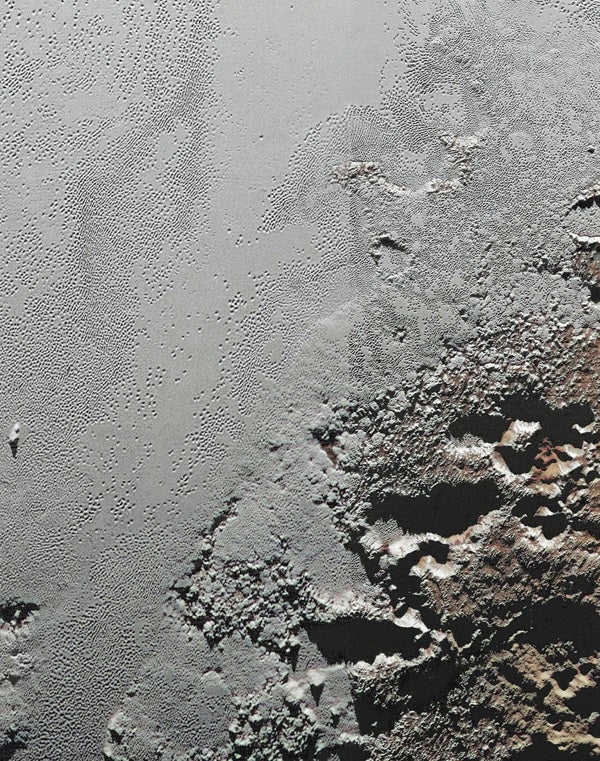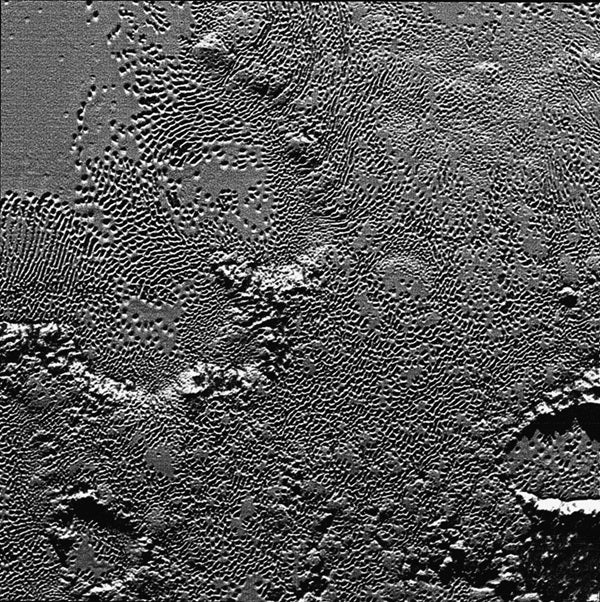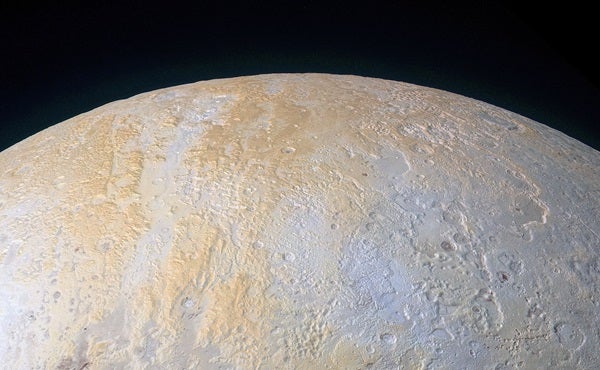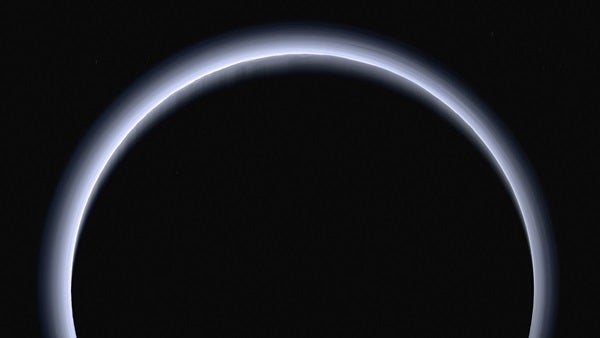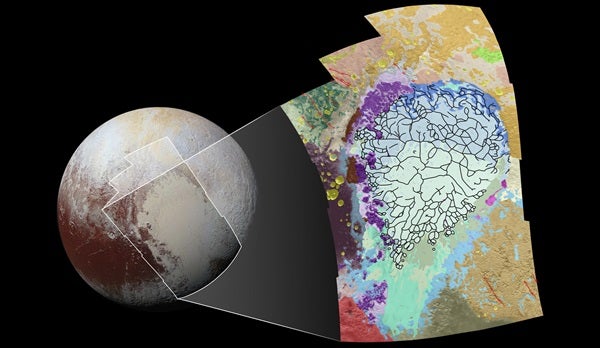The exploration of Pluto wasn’t easy, but it sure was worth it. As David Grinspoon and I recount in our book, Chasing New Horizons, it took 14 years (1989 to 2003), about a dozen different mission concept proposals, and the weight of the first National Academy Planetary Science Decadal Survey just to unleash the funding. After a fierce competition among rival teams, NASA ultimately selected New Horizons as its Pluto flyby mission.
That was followed by a breakneck four-year schedule to design, build, and test the spacecraft in order to meet the time-critical 2006 launch window needed to use Jupiter for a gravity assist. Once that was achieved, New Horizons had to undertake the 9.5-year journey across our solar system to reach Pluto and its system of five moons. The entire effort took 26 years and the dedication of literally thousands of individuals, and was done entirely with no backup, no plan B, no Voyager 2 in case Voyager 1 failed.
Spectacular results
In a real sense, I think the solar system saved the best for last. The wait was worth it, though: When New Horizons’ data arrived on Earth, it revealed vast nitrogen glaciers, methane- and water-ice mountains, a complex atmosphere, and a range of terrain ages that prove the planet is intensely active more than 4 billion years after its formation. But there was more — including evidence for organic compounds, liquids on Pluto’s surface in its past, ice volcanoes that erupted onto the planet’s surface, and an ocean of liquid water in Pluto’s interior.
Pluto’s moons didn’t disappoint, either. New Horizons found new evidence that they formed together after an ancient, giant impact between Pluto and another dwarf planet. Pluto’s largest moon, Charon, also revealed a puzzlingly reflective surface and never-before-seen dark polar caps seemingly made of methane that had escaped from Pluto’s atmosphere.
Those are just a few of the discoveries that New Horizons made. And I can tell you, now four years after that flyby, the New Horizons science team and many other members of the planetary science community have concluded that a new mission to explore Pluto in more depth is required to unravel these puzzles.
This is needed in part because much of Pluto and its moons couldn’t be mapped in sufficient detail with a single fast flyby. It’s also needed because Pluto’s surface and atmosphere are evolving with time and beg for an orbiter to observe those processes. But the main reason for a new mission is that many of the mysteries New Horizons found require new types of instrumentation to be brought to bear — instruments New Horizons did not carry.
Whether that orbiter mission is funded depends almost entirely on the findings of the next planetary decadal survey, whose committee will begin its work next year. The survey results will appear in 2022.
More goals for a return to Pluto
Why do we want to go back? There are many reasons. First, limited by the nature of its fast flyby, New Horizons could map only 40 percent of Pluto’s geology and surface composition at good resolution. The same is true for Charon. And we learned even less about Pluto’s four small moons because the craft didn’t fly close to any of them.
Second, we learned that Pluto is a dynamic world, with a roiling nitrogen glacier, avalanches, and a complex and time-variable atmosphere. But New Horizons’ flyby reconnaissance of Pluto all took place in one roughly 24-hour period, July 14, 2015. It gave us a wonderful snapshot first look, but no chance to see the daily, seasonal, and geological changes that an orbiter can probe but a flyby cannot.
Third, we learned that new kinds of instrumentation will be needed to answer the many questions that the New Horizons data sets raised. Going back with an orbiter will allow us to use instruments to peer through Pluto’s glaciers with radar to determine how deep they are. The spacecraft also will carry a mass spectrometer to sample Pluto’s atmosphere, inventory all the compounds there, and determine the nature of Pluto’s hazes.
And there is so much more. Only by radio tracking a vehicle, orbit after orbit, can we probe the interior of Pluto to determine if the suspected ocean is really there. And we need to send a thermal mapper to determine how Pluto’s vast glaciers are powered and if its ancient ice volcanoes are still active. Without flying a magnetometer, we will never know if the planet’s core is alive and churning or dead and frozen solid. Finally, we want to send lidars and other active instruments that can make maps even in the darkness of polar shadows. The aim is to inspect the night sides of Pluto and its moons to detect changes as the temperatures plummet when the Sun goes down.
So, we need an orbiter to complete the job that New Horizons started so well. That orbiter should be designed to operate for years, not days, returning data week in and week out as it closely inspects all of Pluto’s moons and watches the planet’s surface and atmosphere evolve.
Designing the mission
With all this in mind, I led an internal research project from mid-2017 to mid-2019 at the Southwest Research Institute (SwRI) to study how to implement a Pluto orbiter. The study team included my SwRI colleagues Tiffany Finley, Mark Tapley, John Scherrer, and Amanda Zangari (who is now at Lincoln Labs).
The mission design we created put a New Horizons-scale spacecraft with new instruments into Pluto orbit. It requires one of the massive new, Saturn V-class launch vehicles now in development, a Jupiter gravity assist, and a nuclear electric stage augmented by a chemical propulsion braking stage to reach Pluto orbit.
We studied what kind of payload should be flown on such an orbiter, what kind of orbital tour would be possible, what the main orbiter spacecraft attributes need to be, and how to get such a spacecraft from Earth to Pluto. This study constituted the first, and presently the only, investigation of how to build a Pluto orbiter to follow up on the discoveries of New Horizons.
One of the top breakthroughs was a game-changing solution to the propulsion requirements to tour the Pluto system, which originally added a huge amount of mass to the spacecraft. We discovered that virtually all of the propulsive needs to explore many aspects of the planet and its satellites could be eliminated using targeted close flybys of Pluto’s Texas-sized moon Charon for repeated gravity assists. This is analogous to how the Cassini orbiter toured the Saturn system using the large moon Titan for gravity assists. When we simulated the idea, it worked beautifully, eliminating most of the fuel an orbiter needs to carry.
The timeline
The mission timeline we created is as follows: Launch in December 2028, a Jupiter gravity-assist flyby in October 2030, braking into Pluto orbit beginning in 2046, and concluding in 2059. We could get there faster if high-power nuclear systems are available to increase braking thrust so the orbiter has enough power to slow down at Pluto, but a slower trajectory is feasible with current systems.
The resulting two-year tour of the Pluto system begins with a Charon gravity assist and a braking maneuver to complete the Pluto orbit injection. Then, using orbits that are typically just a couple of weeks long, the craft will explore each of Pluto’s small moons half a dozen times in close flybys — and Charon itself with more than 30 close flybys. It also will make both polar and equatorial flybys of Pluto and dip into Pluto’s upper atmosphere for sampling multiple times. And it will fly over Pluto’s poles many times, as well as out into its distant “magnetospheric tail” for specialized studies. The tour could continue much longer, but after two years, the spacecraft will have met all of the scientific objectives we set for it.
The spacecraft
Most of the capabilities needed for the orbiter spacecraft are similar to those for New Horizons. But the resulting flight system, which features twice the payload mass of New Horizons, fully redundant spacecraft systems, and electric and chemical propulsion systems, has a mass of 5,156 pounds (2,339 kilograms). That’s the current estimate. However, the launch vehicle we chose will be able to lift 30 percent more than that into space, in case the payload changes. That weight is nearly five times more than New Horizons, but that’s the nature of an orbiter mission because it must carry so much fuel to brake into Pluto orbit.
There are three primary differences between the proposed orbiter and New Horizons. The first is the need for either more onboard fuel or spacecraft reaction wheels to perform the thousands of pointing maneuvers during the two-year tour. The second is the need for larger onboard data storage than the 16 gigabytes that New Horizons carried. But the biggest single change is the need for a more capable communications system.
The communications system built to return all the data from the single flyby that New Horizons performed took 16 months to complete its job. That’s completely untenable for an orbiter, which needs to send its data to Earth every 15 to 30 days to be effective. That in turn requires a much larger dish antenna and a transmitter nearly 10 times more powerful, along with smarter software to remove background noise from images and spectra. Fortunately, none of these changes requires new technology, and the mission looks entirely feasible with existing flight systems.
Go wide or go deep?
Before the exploration of the Pluto system in 2015, most planetary scientists thought the natural follow-up to New Horizons would be the flyby reconnaissance of other dwarf planets in the Kuiper Belt. This way, the diversity of dwarf planets could be explored in the same way that the Mariner, Pioneer, and Voyager missions conducted the first reconnaissance of all the terrestrial and giant planets decades ago.
However, the spectacular complexity found in the Pluto system created contention in the Kuiper Belt, dwarf planet, and planetary origins communities. Many, myself included, argued that we needed instead to return to Pluto to study it in depth via an orbiter mission, rather than reconnoitering the diversity of Kuiper Belt dwarf planets with new flyby missions to several of them.
But, in our second breakthrough, the Pluto orbiter study that I led at SwRI also showed that it is possible to have both — i.e., to combine the two missions into one, and to do so at an affordable cost. Because that breaks the tug of war between going wide in studying other dwarf planets and going deep in Pluto studies, we dubbed the resultant all-in-one concept the “Gold Standard” Pluto-Kuiper Belt exploration mission.
The Gold Standard
The game-changing Gold Standard mission works like this: First, after an orbital tour of Pluto, a final pair of close gravity-assist flybys of Charon will free the orbiter from the Pluto system to explore the Kuiper Belt without any need for any propulsion from the orbiter. Next, using only the existing capabilities of the NASA Dawn mission electric propulsion system, the craft will conduct a flyby tour of up to a half-dozen small Kuiper Belt objects and any one of a number of dwarf planets. In fact, in some scenarios, the Dawn propulsion system can even place the Pluto orbiter around a second dwarf planet for another orbital mission.
These breakthroughs crush the debate about whether the next exploration step after New Horizons should be to fly by other Kuiper Belt objects and dwarf planets or to instead orbit Pluto, because we’ve shown that this debate is moot — a single mission can do both.
Such a mission could be launched in the late 2020s or late 2030s. It would have profound impact for a broad suite of planetary science studies including planet and planetesimal formation, ocean worlds, exotic atmospheres, the workings of dwarf planets, and potentially even astrobiology. This proposal creates a powerful mini-flagship mission for the next planetary decadal survey to consider.
Conclusions
A key finding from New Horizons is that Pluto and its moons, like other planets closer to home, are too complex and too compelling to be left to a single first flyby reconnaissance. Pluto beckons, and we must return with an orbiter. The Gold Standard can solve the tension between scientists wishing to return to Pluto and others who think it wiser to explore the broader Kuiper Belt.

